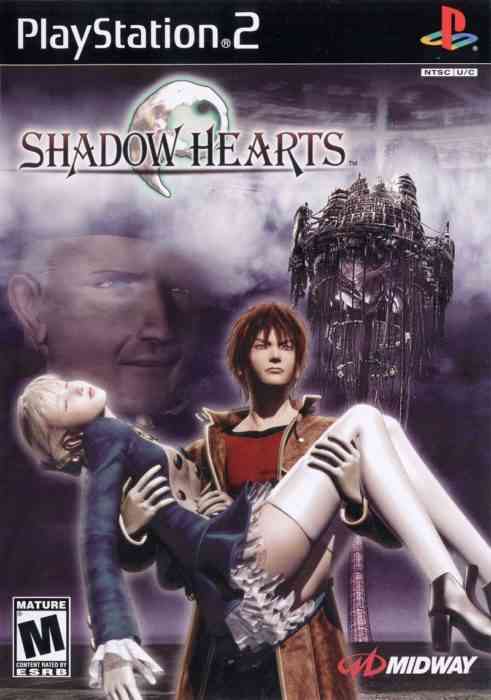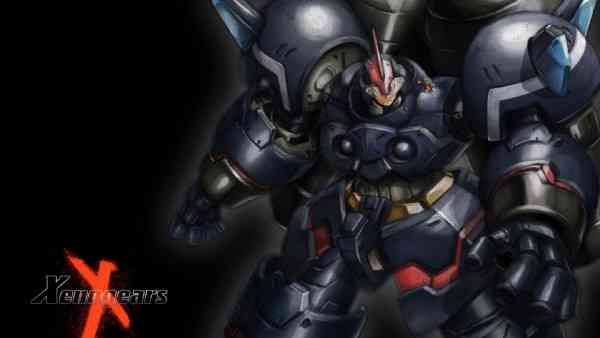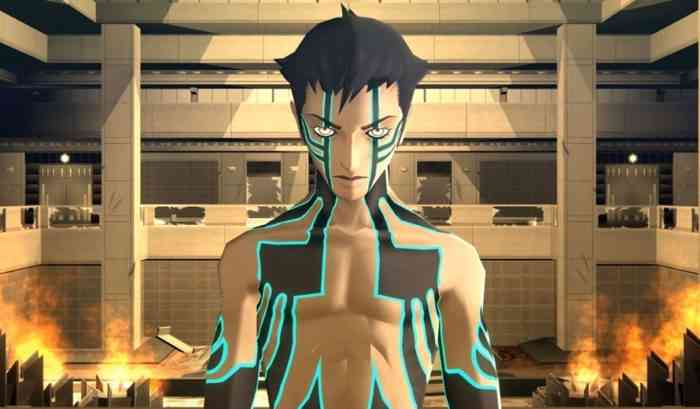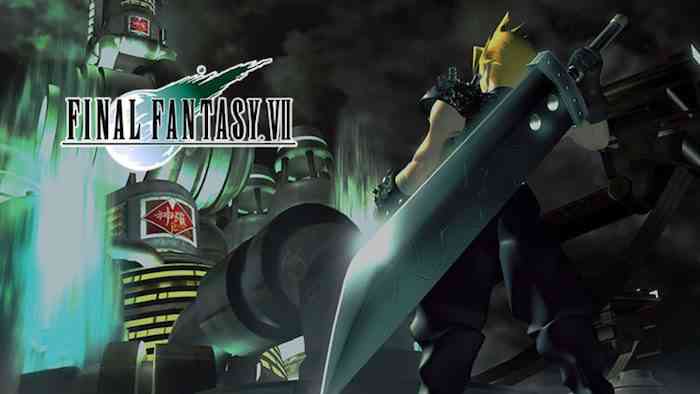Still Awesome, Even More Mind-Bending
Quick recap: once upon a time, JRPGs used to be completely insane. No, really. There was a period in the 90s and early 2000s where big-budget studios like Squaresoft suddenly started producing incredibly wild titles. These games generally had top-notch production values, a ton of love poured into them, incredibly striking aesthetics, and stories so odd and unexpected that they stick with people to this day. We’re talking 50-hour-long epics produced by major corporations here, not the short little weird games that populate the indie game market today. These titles had messy characters, messy relationships, and yes, messy plots, but the frayed edges were part of the magic. In an age where big-budget games no longer take so many risks and recent Final Fantasy games are less interesting than Kingdom Hearts, it’s worth celebrating these lost–and bizarre–gems.
Arranged loosely from most obscure to least, here are 11 JRPGs from the past couple decades that are absolutely insane. Some of them blend genres, some of them do funky stuff with game mechanics, some of them are dedicated to flouting expectations, and some of them have giant robots for no discernable reason. There’s so much to talk about that I had to split this article into 2 parts. Here is PART 1.
Here’s part 2, which covers the last 6 games on the list. Be warned: here be spoilers!
6. Persona 2: Innocent Sin/Eternal Punishment
Like Digital Devil Saga, this game is a spin-off of the Shin Megami Tensei series and is actually two games. Unlike Digital Devil Saga, Persona 2: Innocent Sin and its sequel, Eternal Punishment, are both standalone titles. Innocent Sin focuses on Tatsuya Suou, a high school student who is targeted by Joker (no, not that Joker), a supernatural menace who sucks the life out of people. Joker blames Tatsuya and his classmates for an unspecified crime in the past–one they can’t remember. To survive, they must dig up their buried memories, reconnect with forgotten friends, and unlock hidden power. But they’d better be careful, because the fabric of reality is beginning to fray, and in a world where rumor becomes reality, there’s no limit to what can happen. The kids could be forced to kill their principal in self-defence, for example. Or Hitler could be resurrected. Or the world could end, because as it turns out, a bunch of traumatized teenagers aren’t the best people to try and save it. Yeah, that actually happens. Persona 2 doesn’t mess around.
Though Eternal Punishment technically picks up directly where Innocent Sin leaves off, Innocent Sin leaves off with the main characters agreeing to have their memories of each other erased so they can create an alternate world where they didn’t screw up and fail to stop the destruction of the whole universe. So in practice, it’s a soft reboot–you know, right up until both the player and new protagonist Maya realize that the conflict of Eternal Punishment was kicked off by Tatsuya not having lost his memories with everyone else. Now it’s up to Maya and the rest of her scattered party of working adults to prevent the universe’s destruction and save the traumatized kids. If you’re interested in urban fantasy, horror, and especially Lovecraftian themes, I can’t recommend Persona 2 enough.
5. Shadow Hearts/Shadow Hearts: Covenant
You know what I don’t see a lot of? Historical fantasy JRPGs. You know what else I don’t see a lot of? Horror JRPGs. You know what developer Sacnoth’s Shadow Hearts and its direct sequel, Shadow Hearts: Covenant offer? Historical fantasy-horror JRPG action. These games have it all: spooky ghosts, real-world locations, a lovely tour of pre- and mid-WWI Asia and Europe, and some of the funniest characters who’ll ever make you feel an emotion. In short, the franchise offers some top-grade dark comedy with your surprisingly nuanced character development, genuinely scary horror story, and neat alternate history exploration. They follow Yuri Volte Hyuga, a snarky young man who happens to be a Harmonixer–a sorcerer who can absorb the Malice of monsters and forcibly lay them to rest, while also giving him the power to take on their forms–which is good, because the voice in his head won’t stop demanding he do increasingly dangerous things. Yuri’s primary orders are to protect Alice Elliot, a young cleric, from a man who needs her powers to save the world. By destroying it. And that’s only in the first game.
Most JRPGs have you start out fighting slimes or goblins. In Shadow Hearts, you start out fighting skinned corpses. Covenant tones down some of the horror elements–some–but retains the same bizarre sense of humor, surprisingly strong relationships, and spooky monsters. You’ll desperately juggle spells and sanity points while trying not to let your party members go berserk, recruit Princess Anastasia pre-revolution and ransack NPCs’ homes for gay porn you can trade for better equipment, and become increasingly worried about Yuri’s mental and emotional health as he absorbs more and more of the world’s Malice. These games start out creepy and spiral into Lovecraftian territory without ever losing sight of what makes them charming. I really can’t recommend them enough. No comment on the third game, Shadow Hearts: From The New World, though. You can have too much of a good thing.

It’s odd to talk about a spiritual successor before the series that inspired it, but my experience tells me that Xenosaga is just a bit more obscure than Xenogears, so I guess we’re starting out in space and working backward. In short, Xenosaga is a trilogy of science-fantasy space opera games developed by Monolith Soft–specifically, by a team composed of ex-Square Enix employees who wanted to do more with the ideas and themes of Xenogears. These three titles focus on Shion Uzuki, head of the first R&D division of Vector Industries, and KOS-MOS, the android superweapon she’s developing. When disaster strikes in the form of the Gnosis, intangible but deadly extra-dimensional beings, Shion gathers a team of cyborgs, androids, artificial human mercenaries, an ambiguously human traveler who can destroy Gnosis with a touch, and her estranged brother. Together, they must survive, find the source of the Gnosis, and unravel the truth of what happened on planet Miltia 14 years ago. The truth of that incident could destroy Shion or save them all.
Xenosaga takes place in a future where Earth has been quite literally lost to the ages, as in ‘no one even remembers where it was anymore,’ and humanity is becoming an increasingly nebulous term. It’s a series where Mary Magdalene is reincarnated as a robot and one major villain was driven insane as a child by being forced to experience the heat death of the universe. It draws heavy influence from the real first and second century CE religious movement known as Gnosticism, as well as alchemy, philosophy, and psychology. There are a ton of symbols and obscure details that you probably won’t pick up unless you have degrees or special interests in these areas. These are the kind of games people can and do write essays about. If that sounds like fun, check the Xenosaga games out.

Here it is. The beginning of a sprawling, multi-brand franchise. The origin of both Xenosaga and Xenoblade. Many JRPGs have blended fantasy and sci-fi before, but nothing quite like this. The game begins with the cinematic destruction of a high-tech spaceship from within before immediately switching to a remote fantasy village where Fei Fong Wong, a sensitive painter with a past he can’t remember, is preparing for his wedding day. Unfortunately, things go horribly wrong when the entire town, including his bride-to-be, is annihilated by a mysterious madman called Id piloting a humungous mecha called Weltall. Fei narrowly survives the incident, only to find his fate bound to the machine. From there, Fei is hunted by the military, dragged into a civil war, and forced to battle the tyrannical Empire of Solaris, all while frantically trying to understand what is happening to him–and why he feels like he already knows Elly, the enemy officer who defects to join him. Who is Fei, exactly? The answer to that question could be the only thing that can save this world.
Xenogears is a flawed masterpiece that combines mecha-to-mecha combat with more standard foot battles fought using magic and conventional weapons, a choice that should stick out in its old-school fantasy anime-style world like a sore thumb. It doesn’t, because Xenogears has a metric ton of worldbuilding and backstory that go into fleshing out a plot that spans 10,000 years, crossing from grounded fantasy to political intrigue to high-concept sci-fi. This game touches on just about every subgenre that falls under the umbrella of speculative fiction and does so with incredible panache. It hits many of the same cosmic and religious themes are Xenosaga, including the protagonist with a shattered mind and a tragic past, but does so in a way entirely its own. Unfortunately, the second disc goes increasingly off the rails structurally as poor scheduling, inexperienced staff, and lack of budget, resulting in one-hour long cutscenes and entire scenes consisting of characters sitting in a chair and summarizing the events of the story. Even in its unfinished state, there’s nothing out there quite like Xenogears, including its many successors. If you look into just one game on this list, make it this one.

2. Shin Megami Tensei: Nocturne
If you’re not feeling a game with an overly complicated plot, how about one that’s all atmosphere? The third game in the mainline Shin Megami Tensei series starts right before the end of the world–as in, about ten minutes before the apocalypse. That gives you just enough time to get to know your two best friends, Isamu and Chiaki, take a quick tour of an abandoned hospital, and almost get murdered by an evil cult leader before a creepy little boy drops a demonic parasite into your eye. Now you’re the Demi-Fiend, an entity somewhere between human and demon.
Good news: this means you survive the apocalypse that wipes out basically everyone else and smooshes the remnants of Tokyo into the spherical Vortex World, an ocean of power and lost souls waiting for someone to turn it into something new.
Bad news: to create a new world, you need two things. One, you must be human; two, you must have developed a Reason you want to build that new world around. As a part-demon, the Demi-Fiend is no longer capable of building his own Reason, but as he gathers power and explores the ruins, he may become the most dangerous piece in the game. This world might be beyond saving, but you can still decide how this story ends. Spoilers: it is, and has always been, a horror story.
Shin Megami Tensei: Nocturne is drenched in creepy ambiance from beginning to end. The simple story and archetypal characters don’t stop it from exploring incredibly dark themes like grief, self-destruction, cult mindsets, and the slow loss of humanity. It creates a world where gods and monsters walk beside the ruins of mankind’s creations, where magic and technology are one and the same, where true freedom can only be found in rejecting everything that once defined you, and asks ‘what choice feels best to you?’ Also, the art direction is top-notch.

Here it is. The title you’ve all been waiting for. The crowning jewel of JRPGs, if not video games in general. Final Fantasy VII. More than twenty years after it was first released, FFVII still has one of the most interesting settings, weirdest magic systems, and most engaging casts in gaming history. In many ways, FFVII is as much a departure from JRPG norms as Wild ARMs 3. Think about it: there’s only one teenager in the main cast. The protagonist is clearly suffering from a form of PTSD and has made up most of his past. The party consists of eco-terrorists fighting against a huge corporation that is metaphorically and literally killing the planet. And then there’s Aerith, whose death was carefully crafted to make sure it lingered with the player, a gambit that succeeded with flying colors. The story of Cloud Strife, AVALANCHE, Shinra Electric Power Company, and Sephiroth went down in history for good reason.
To this day, I can’t think of a setting that better fuses technology and magic. The world of FFVII is cyberpunk by way of fantasy, where super soldiers that can shrug off bullets coexist with gigantic magitech guns, where you can buy magic in cities while literal monsters spawn in the slums. It feels like what would happen to a standard JRPG fantasy setting if technology moved down a familiar path rather than staying stuck in the medieval ages. The result is an eerie mirror of our world that wouldn’t be out of place in something like Black Mirror. Aerith’s murder left a scar on the psyche of gamers that is still felt today, but she’s far from the only memorable thing about FFVII. It wouldn’t be an exaggeration to say that this game changed the way videogames are made. So really, if you haven’t already, go check it out. FFVII is more than worth it.

That’s the second half of my list of bizarre classic JRPGs! You can check out PART 1 here.
Thank you for keeping it locked on COGconnected.